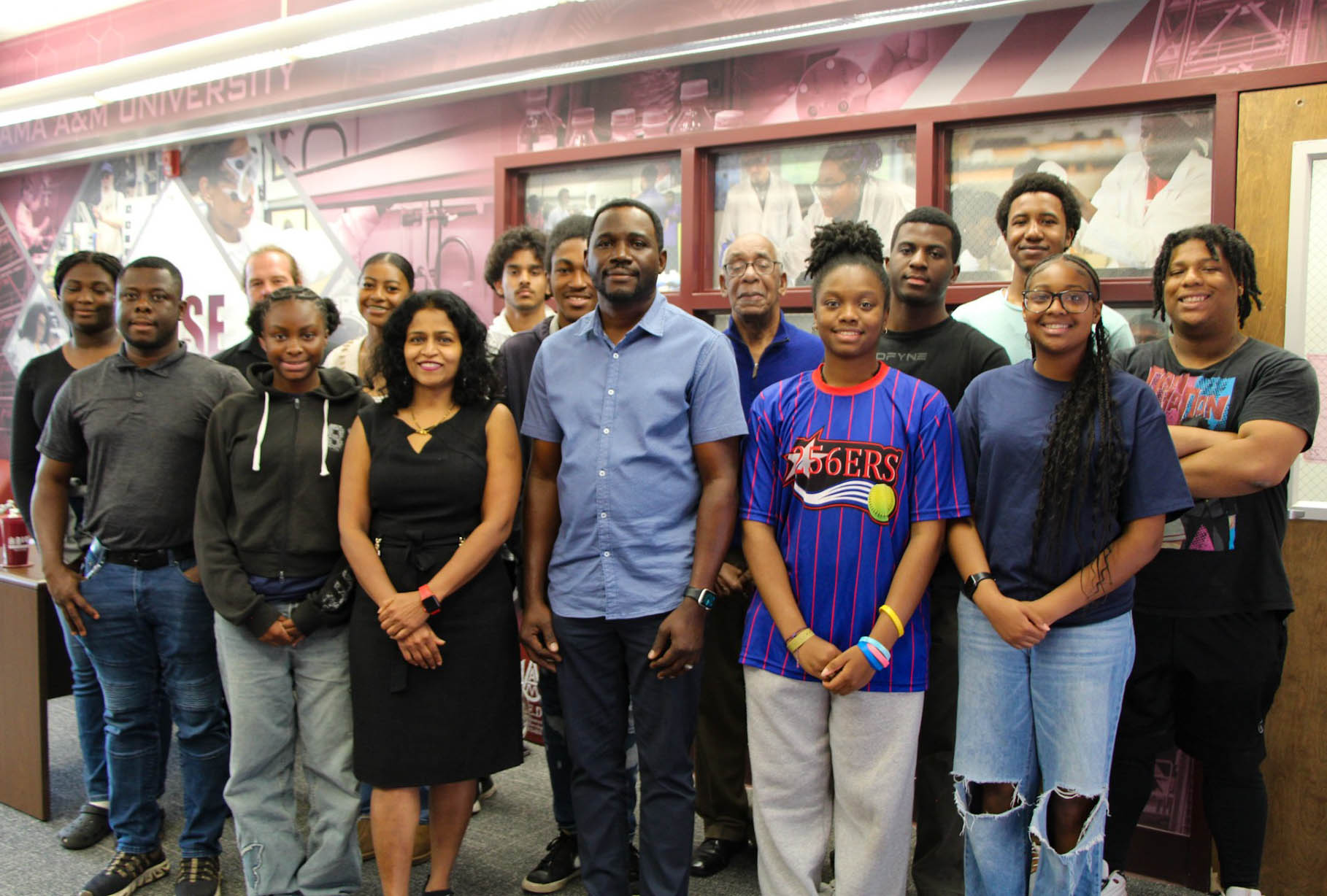STEM Outreach Advances DOE-NNSA Partnership and Connects Students to Research Opportunities

AAMU Engages Future Scientists Through Radiation Seminar and Career Exploration
The Alabama A&M University Department of Physics, Chemistry and Mathematics recently welcomed a group of area high school students and their families to an immersive radiation seminar designed to inspire future careers in science and technology. The seminar took place at the Howard J. Foster Irradiation Complex, a specialized research facility on campus that reflects the University’s growing role in national science initiatives.
The outreach effort was made possible through the U.S. Department of Energy’s National Nuclear Security Administration (DOE-NNSA) Minority Serving Institution Partnership Program (MSIPP), supported through the University’s Partnership for Radiation Studies (PaRS) Consortium. It builds directly on the momentum of the $2.83 million DOE grant awarded to AAMU physicist Dr. Stephen Babalola, which funds student research, STEM outreach, and hands-on training in radiation detection and related technologies.
Dr. Padmaja Guggilla (Co-PI) opened the seminar with welcoming remarks, emphasizing the department’s commitment to interdisciplinary learning, workforce readiness, and mentoring the next generation of scientists.
Babalola, who also serves as Director of the PaRS Consortium, encouraged students to explore the vast possibilities within physics and radiation research. He highlighted how the PaRS program is intentionally designed to provide students with real-world applications and a meaningful entry point into careers that contribute to national security, energy sustainability, and advanced technology.
Participants were given a unique opportunity to explore Alabama A&M’s laboratory spaces, including its particle accelerator and crystal growth facilities. Dr. Jonathan Lassiter, a research associate and co-principal investigator in the PaRS Consortium, guided the tours and explained how university researchers synthesize and characterize radiation-detecting crystals.
The seminar drew strong interest from a group of approximately 10 to 15 high school students. They engaged with faculty, toured advanced laboratories, and learned about pathways that could one day take them from classrooms to national laboratories.
Dr. Peace Dunu and Bobby Petty with the North Alabama Center for Educational Excellence (NACEE) were also on hand. They are key supporters of early STEM engagement and dedicated to empowering students through access, preparation, and career guidance.
The seminar represents one of many STEM outreach efforts led by AAMU since the launch of the PaRS program in September 2022. Through the DOE-NNSA MSIPP initiative, eligible AAMU students who maintain a minimum 3.0 GPA can apply to participate by emailing Babalola directly. Once accepted, students receive stipends during the academic year, enjoy fully funded summer internships at DOE national laboratories, and are supported to travel and present their work at major scientific conferences.
“We want students to see themselves in this work – not just someday in the future, but right now,” said Babalola. “By giving them access to our labs, people, and projects, we’re helping them imagine real careers in science.”